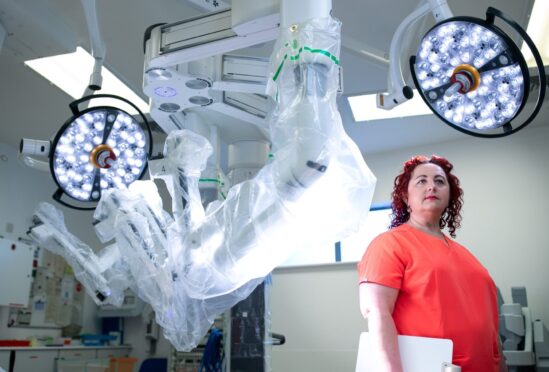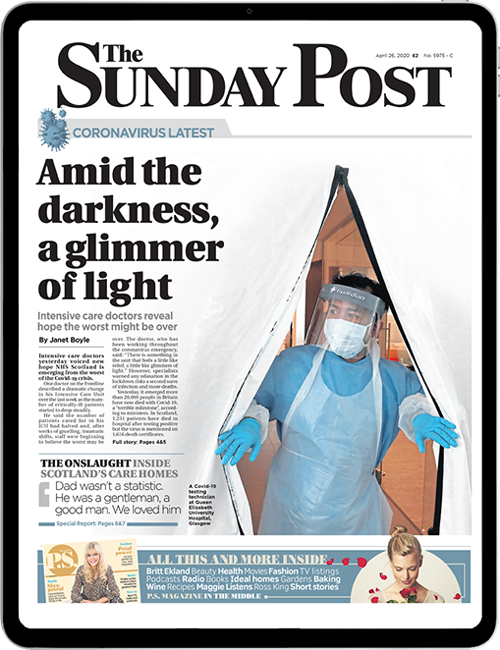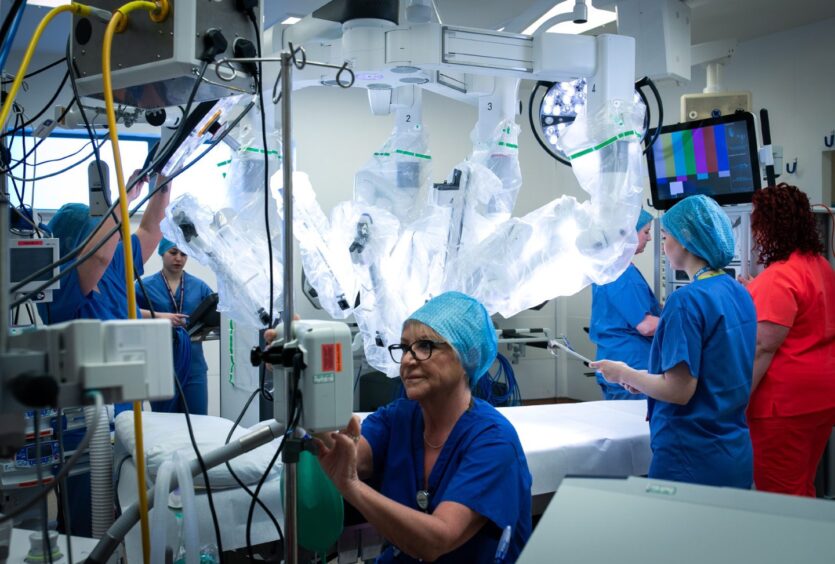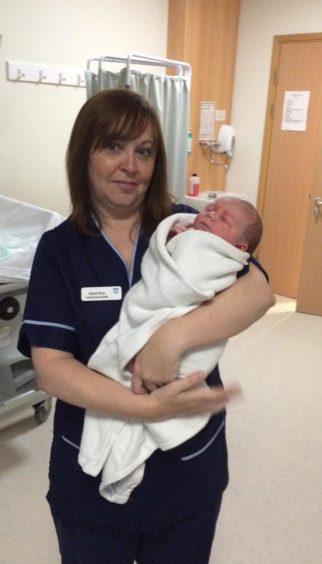
Women are walking out of hospital within three hours of major surgery rather than spending four days on a ward thanks to a revolution in gynaecology.
Urogynaecologist Inna Sokolova is leading the way with her team at NHS Ayrshire and Arran providing cutting-edge robotics for the most common women’s operations – hysterectomy, endometriosis surgery and fibroid removal.
She believes the current four-year waiting lists facing 10,000 women across the country could be a thing of the past if robotics were offered as standard instead of only for women with cancer.
Shockingly, women living in some health board areas are now waiting almost six years for a hysterectomy.
New technology
Inna said: “Until now, we have only been able to treat women with cancer. But we have now developed a system which means we can offer robotic surgery and all its advantages to women who don’t have cancer but do need hysterectomy or other procedures.
“I’m a practical woman. I understand women have family responsibilities, caring for elderly parents or others. Having to spend days in hospital and weeks recovering is not an easy thing to contemplate when others are relying on you.
“Using robotic surgery, we can offer faster treatment, faster recovery, less chance of complications or scarring. We have women walking out of our hospital within three hours of surgery, and their recovery time is weeks rather than months.”
Inna and her team at University Hospital Crosshouse have carried out around 300 mainstream gynaecology procedures so far and are adding prolapse and incontinence surgery to their list of specialities. They have already delivered presentations at major international conferences, pushing the agenda for robotics.
Inna said: “I’m so very proud of my team. They are all incredible. And we are delighted to be helping other surgeons from all over the country, showing them the advantages in robotic surgery which can tackle even the most complex procedures.
“Most of all, the reaction from our patients has been incredible.
“One mum had major surgery and felt so well afterwards, within a couple of hours she was at the school gates collecting her children.
“Right now, around half of all the hysterectomies carried out in the country are still done using traditional open surgery methods. That means four days in hospital, major wounds, scarring, and recovery that can take a couple of months. Robotic surgery cuts the time in theatre by half, recovery time is halved, and the incisions we make are tiny in comparison.
“The investment is expensive as the machinery costs a great deal of money. There are training costs. But after that, the savings made because patients don’t need to stay in hospital mean the system is far cheaper in the long run.”
An astonishing 95% of NHS Ayrshire & Arran’s robotic gynaecology surgery patients are home within hours. And because theatre time is halved, they are able to treat twice as many patients.
Inna said: “Robotic surgery is the future. I hope by encouraging other health boards to see the advantages, more will follow in our footsteps.”
How the surgery works
The £20 million Scottish Government investment in a dozen Da Vinci systems means more than 10,000 patients have been treated since 2021, mainly for life-saving cancer surgeries and complex colorectal procedures.
Surgeons use robotic arms carrying instruments and cameras, controlled through a console and screen.
Because they are so precise, only tiny incisions are required by the robotic arms which can operate deep inside the body with relatively no pain or damage to adjoining tissue.
They can also treat patients normally excluded from surgical lists, including women with a high BMI.
Inna said: “For years now, women’s health has not had the frontline focus it should have had. We’d like to change all that.
“Our dream is to offer robotic surgery for all suitable women’s surgeries.”
Inna and her team have started developing treatment for prolapse and incontinence which affects thousands of women every year following childbirth.
The disastrous mesh implant saga where NHS Scotland decided to “save” £200 per patient by turning away from traditional surgery to using plastic mesh implants which cut through nerves and organs, left hundreds of women crippled, destroying their lives.
Inna said: “I’m hopeful we will soon be able to offer our patients robotic surgery for these conditions. We learned a lot from what happened with mesh implants. That is why we are working very closely with our patients to develop these new procedures.
“We need our patients to feel confident in what we are doing. They are at the heart of everything we do.
“I believe we are at the forefront of the biggest changes we will ever see in surgery. Robots don’t need holidays. They don’t get tired.
“I’m excited to see where these innovations will take us next.”
Elaine’s story
Incredible – one paracetamol and I was home in a couple of hours
Midwife Elaine Pirrie, left, was one of the first to undergo a robotic hysterectomy at Crosshouse Hospital, and she only needed one paracetamol after her surgery.
Elaine, 55, who lives near the Ayrshire hospital, said: “I consider myself to be one of the lucky ones to have been able to get robotic surgery last October.
“I’d been suffering pain and discomfort for around five months or more when I was informed that I needed a hysterectomy.
“Traditional surgery would have meant a long time off work for recovery, and that would have been quite disruptive as I had a lot of family commitments – looking after elderly parents and my grandchildren on top of my busy job.
“Instead, I was out of surgery and home within a couple of hours.
“Considering I’d just had what is usually a major procedure, I had no pain at all and was feeling really good.
“I remember waking up the next morning at 5am and taking one paracetamol as a precaution. In all honesty, I probably didn’t even need it.
“I had a much quicker recovery than I expected. I was back at work within a month rather than the two or three months I would have been off with traditional surgery.
“It really has been a good experience in every way.
“I’d certainly recommend robotic surgery. It’s an incredible advancement.”

Enjoy the convenience of having The Sunday Post delivered as a digital ePaper straight to your smartphone, tablet or computer.
Subscribe for only £5.49 a month and enjoy all the benefits of the printed paper as a digital replica.
Subscribe © Andrew Cawley
© Andrew Cawley © Supplied
© Supplied